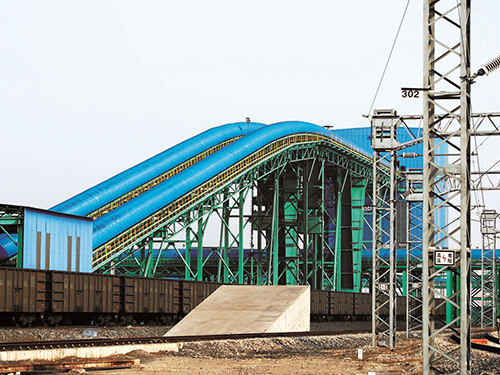
Conveying equipment
Description: The conveying equipment includes: 90 degree belt turning machine, 180 degree belt turning machine, stainless steel belt turning machine, 45 degree belt turning machine, stainless st...
Click: 81

The conveying equipment includes: 90 degree belt turning machine, 180 degree belt turning machine, stainless steel belt turning machine, 45 degree belt turning machine, stainless steel belt conveyor, plastic nozzle belt conveyor, newspaper belt conveyor, belt elevator, electronic component belt conveyor, light inspection belt conveyor, and multi-layer belt conveyor
The conveying equipment uses the continuous or intermittent movement of conveyor belts to transport various light and heavy items. It can transport various loose materials, as well as various small single weight items such as cardboard boxes and packaging bags, and has a wide range of uses. The materials of conveyor belts include rubber, rubber, PVC, PU, and other materials. In addition to being used for the transportation of ordinary materials, they can also meet special requirements such as oil resistance, corrosion resistance (based on actual reports), and anti-static (based on actual reports) for the transportation of materials. Adopting a one-to-one level conveyor belt can meet the requirements of industries such as food, pharmaceuticals, and daily chemical industry. There are various structural forms such as groove belt conveyor, flat belt conveyor, climbing belt conveyor, turning belt conveyor, etc. The conveyor belt can also be equipped with accessories such as lifting baffles and skirts, which can meet various process requirements. The conveyor is equipped with workbenches and light frames on both sides, which can be used for electronic instrument assembly, food packaging, and other assembly lines. The driving methods include: deceleration motor drive and electric drum driveThe speed regulation methods include: variable frequency speed regulation, stepless speed regulation
The frame materials include: carbon steel, stainless steel, and aluminum profiles.
Performance characteristics of belt conveyor: The conveyor belt moves according to the principle of friction transmission, with advantages such as large conveying capacity, long conveying distance, stable conveying, no relative movement between materials and conveyor belt, low noise, simple structure, easy maintenance, low energy consumption, and standardized components





 Current location:
Current location:

